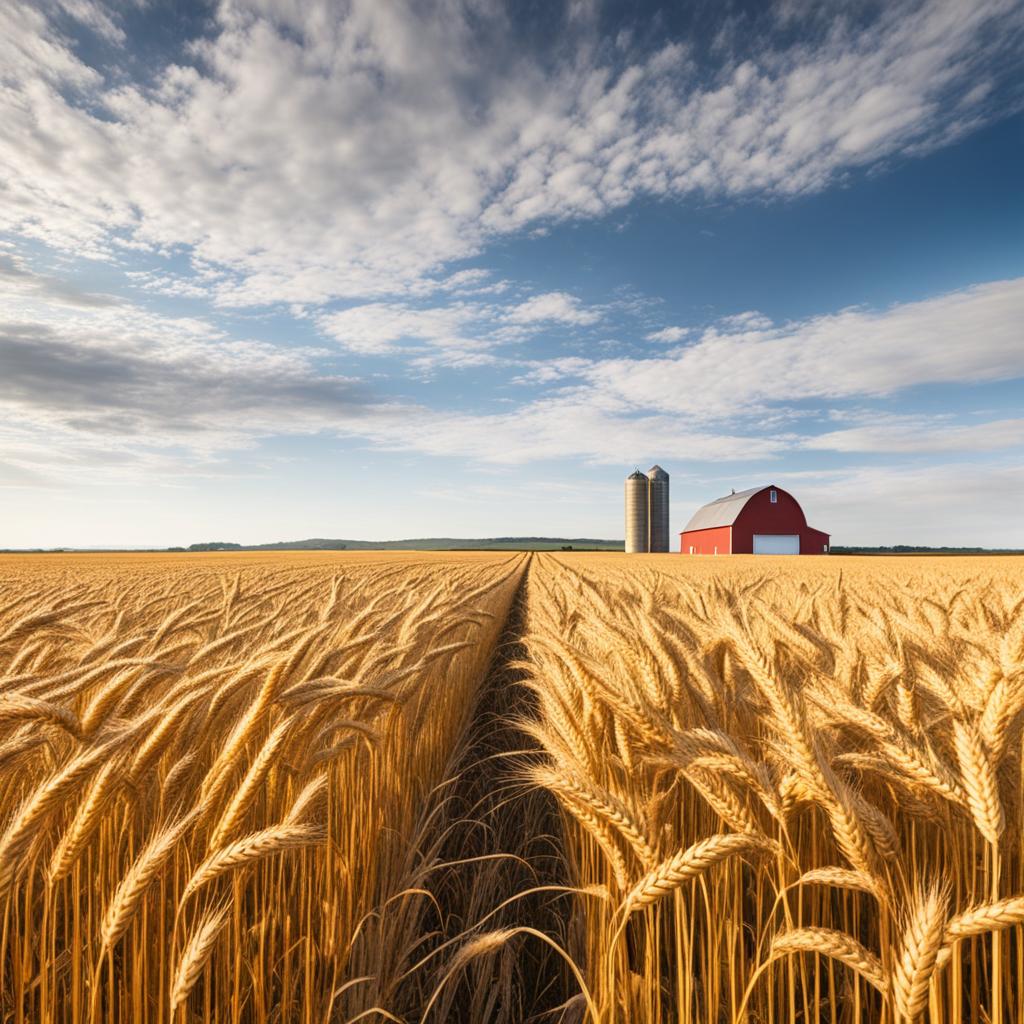Hello, I’m excited to share with you a comprehensive guide to farmland REIT investments in 2024. If you’re interested in farmland investing and exploring the various farmland investment opportunities available, you’ve come to the right place.
Farmland REITs offer a unique avenue for individuals who want to invest in farmland but don’t have the capital to buy land directly. These investment vehicles allow you to indirectly own farmland and benefit from the income generated by leasing it to farmers.
In this guide, we will dive deep into how farmland REITs work and discuss the pros and cons of investing in them. We’ll also explore alternative options for owning farmland and compare farmland investment with other investment opportunities in 2024.
Key Takeaways:
- Farmland REITs provide investment opportunities for those who want to invest in farmland without large capital investments.
- Investing in farmland REITs offers indirect ownership of farmland and passive income through lease payments.
- Farmland REITs are publicly traded, providing liquidity and ease of buying and selling shares.
- Consider the pros and cons, such as potential risks and tax implications, before investing in farmland REITs.
- Notable farmland REITs in the market include Farmland Partners and Gladstone Land, offering stable returns and monthly dividend payments.
What is a Farmland REIT?
A farmland REIT, or agricultural real estate investment trust, is a company that owns and manages farmland properties. These REITs lease the land to farmers, generating rental income that is then distributed to investors in the form of dividends. Investing in a farmland REIT offers individuals the opportunity to indirectly own farmland without the need for significant upfront capital.
Farmland REITs play a vital role in the agricultural industry by providing financing for farmers and facilitating the efficient use of agricultural land. They offer investors a way to participate in the agricultural sector’s growth and earn passive income.
Farmers benefit from farmland REITs as well, as they gain access to land through lease agreements, allowing them to focus on agricultural production without the burden of purchasing and owning farmland.
A farmland REIT provides a win-win situation, supporting both investors and farmers in the agricultural ecosystem.
Investing in a farmland REIT can be an attractive option for individuals who want to diversify their investment portfolio and capitalize on the steady demand for agricultural commodities. Let’s take a look at the benefits and considerations of investing in farmland REITs.
Pros and Cons of Farmland REIT Investments
| Pros | Cons |
|---|---|
| 1. Indirect ownership of farmland without high capital requirements | 1. Potential risks associated with mismanagement by the REIT |
| 2. Diversification of an investment portfolio | 2. Exposure to fluctuations in the agricultural market |
| 3. Steady rental income from lease agreements | 3. Possibility of higher tax rates on dividend income |
| 4. Access to publicly traded shares for liquidity | 4. Limited control over land use and decision-making |
How Does a Farmland REIT Work?
Investing in farmland can be a lucrative option, but not everyone has the capital or expertise to own and manage farmland directly. That’s where farmland REITs come in. A farmland REIT, or Real Estate Investment Trust, allows investors to own shares in a company that owns and manages farmland. This provides an opportunity to indirectly invest in farmland with a lower capital requirement and without the hassle of property management.
So, how does a farmland REIT work exactly? Let’s take a closer look:
- Investing in Increments: One of the benefits of a farmland REIT is that investors can start investing with smaller amounts of money. Instead of buying an entire farm, investors can buy shares in the REIT, allowing them to diversify their investment across multiple farmland properties.
- Property Management and Leasing: The REIT takes care of all the property management tasks, such as finding and leasing the farmland to farmers. This means that investors can earn passive income from the rent paid by the farmers without having to worry about the day-to-day management of the properties.
- Liquidity: Farmland REITs are publicly traded on stock exchanges, which means that investors have the flexibility to buy and sell shares easily. This offers liquidity and allows investors to adjust their investment as needed.
While farmland REITs offer many advantages, there are also some potential risks to consider. Mismanagement by the REIT and higher tax rates are factors that investors should be aware of. It’s important to thoroughly research and evaluate the specific REIT before making an investment decision.
| Advantages of Farmland REITs | Considerations for Farmland REITs |
|---|---|
| Indirect ownership of farmland | Potential mismanagement by the REIT |
| Diversification across multiple properties | Potential higher tax rates |
| Passive income from rent payments | |
| Liquidity through stock exchange trading |
A farmland REIT can be an attractive option for investors looking to diversify their portfolio and earn income from farmland without the need for direct ownership. However, it’s crucial to carefully consider the specific REIT and understand the associated risks before making an investment.
Pros and Cons of Farmland REIT Investments
Investing in farmland REITs can offer compelling advantages for investors seeking stable income, long-term appreciation, and diversification opportunities. As an essential asset in agriculture, farmland investment presents the potential for attractive returns compared to other investment options. However, it is crucial for investors to carefully consider the potential risks, including management decisions by the REIT and tax implications.
Pros of Farmland REIT Investments
- Stable Income: Farmland REITs provide a consistent stream of income through rental payments from farmers leasing the land. This predictable cash flow can be beneficial for investors seeking reliable returns.
- Long-Term Appreciation: Farmland has historically demonstrated long-term appreciation, driven by factors such as increasing land scarcity, population growth, and rising demand for agricultural products.
- Diversification Benefits: Investing in farmland REITs allows investors to diversify their portfolios, reducing exposure to traditional stocks and bonds. Farmland’s low correlation with other asset classes can provide a valuable hedge against market volatility.
Cons of Farmland REIT Investments
- Management Decisions: The success of a farmland REIT heavily relies on management decisions, including property selection, leasing agreements, and operational efficiency. Poor management decisions can impact income and long-term returns.
- Tax Implications: Investors should consider the potential tax implications associated with farmland REIT investments. Tax regulations may change, affecting the profitability of the investment and the overall returns.
“Investing in farmland REITs can provide stable income, long-term appreciation, and diversification benefits.”
By carefully evaluating the pros and cons, investors can make informed decisions regarding farmland REIT investments. It is essential to research specific REITs, assess their track records, analyze financial statements, and consider individual investment goals and risk tolerance. Consulting with a financial advisor or expert in agricultural investments can provide valuable guidance in constructing a diversified investment portfolio that includes farmland REITs.
| Pros | Cons |
|---|---|
| Stable Income | Management Decisions |
| Long-Term Appreciation | Tax Implications |
| Diversification Benefits |
Top Farmland REIT Investments
When considering farmland REIT investments, there are two standout options in the market. These REITs have a proven track record of stable returns and offer attractive investment opportunities for those interested in farmland.
Farmland Partners
One top farmland REIT is Farmland Partners, which owns over 150,000 square feet of land across 16 states. With a diverse portfolio and more than 100 tenants, Farmland Partners provides investors with access to a wide range of agricultural properties. This REIT offers monthly dividend payments, making it an attractive option for those seeking regular income from their investments.
Gladstone Land
Gladstone Land is another notable farmland REIT that focuses on fruit and vegetable farmland in high-demand areas. With ownership of over 115 farms across 10 states, Gladstone Land offers investors the opportunity to participate in the growing demand for fresh produce. Similar to Farmland Partners, Gladstone Land provides monthly dividends to shareholders, enhancing the potential for consistent income.
Both Farmland Partners and Gladstone Land have established themselves as leaders in the farmland REIT space. Their portfolios and prudent investment strategies make them appealing options for individuals looking for farmland investment opportunities.
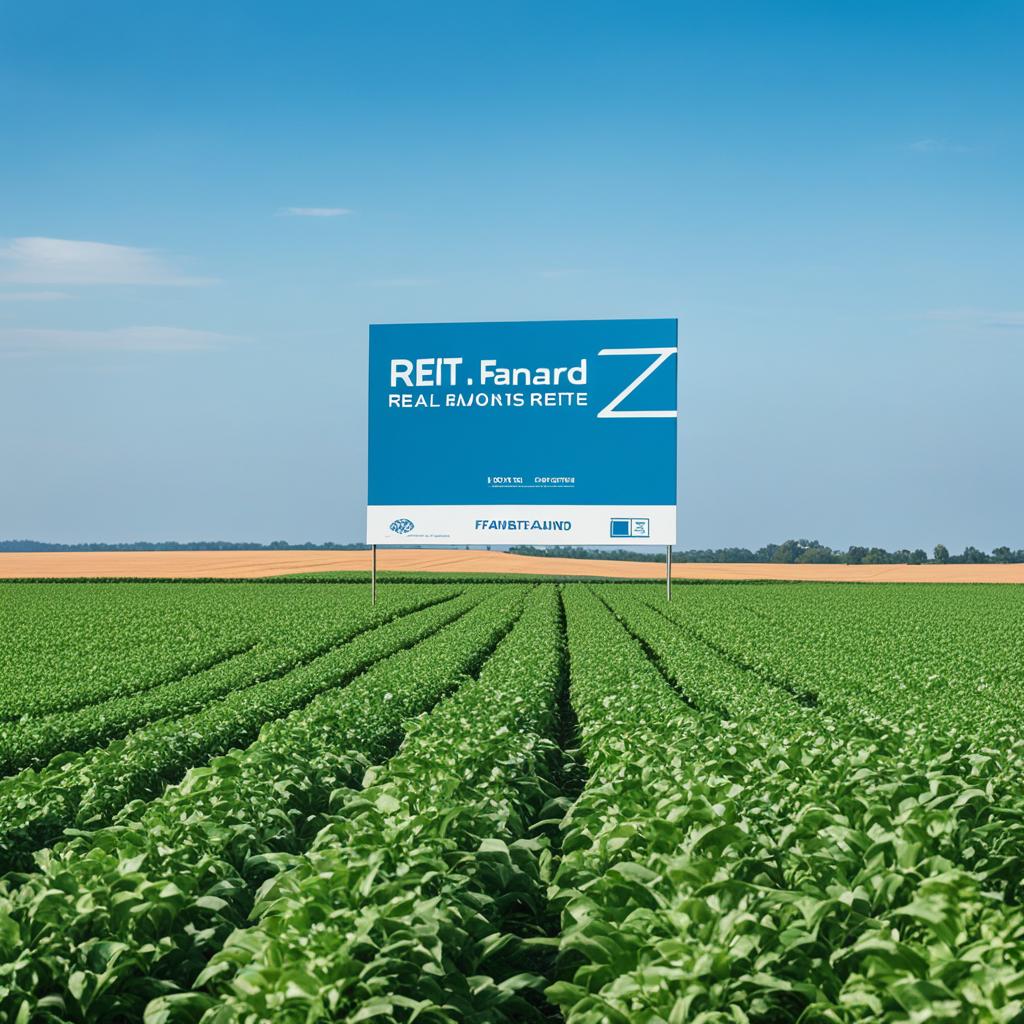
| REIT | Owned Land (Square Feet) | Tenants | Focus Area | Dividend Payment |
|---|---|---|---|---|
| Farmland Partners | Over 150,000 | 100+ | 16 states | Monthly |
| Gladstone Land | Over 115 farms | N/A | 10 states | Monthly |
Alternatives to Own Farmland
While investing in farmland REITs is a popular option, there are other alternatives to owning farmland directly. These alternatives offer different benefits and considerations for investors looking to diversify their portfolios and participate in agriculture investment opportunities.
1. Direct Ownership: Directly owning farmland involves purchasing the land and taking on management responsibilities. It requires a significant upfront investment, as well as ongoing costs for maintenance, property taxes, and farm management. While this option provides greater control over the land, it also requires a deeper understanding of the agricultural industry and hands-on involvement.
2. Sale-Leaseback Arrangements: A sale-leaseback arrangement involves buying farmland from a farmer and then leasing it back to them. This option allows investors to earn rental income without the responsibility of managing the farm. It can be a mutually beneficial arrangement, providing farmers with capital and investors with a steady income stream. However, it’s important to carefully consider the terms of the lease and thoroughly assess the farmer’s financial stability before entering into such an agreement.
3. Farmland Crowdfunding: Accredited investors can participate in farmland crowdfunding platforms, where they can invest in the debt or equity of specific farmland projects. This option offers the opportunity to diversify investments across multiple farms and regions. Crowdfunding platforms provide access to a larger pool of farmland investment opportunities and may offer varying levels of risk and return. Investors should carefully evaluate the platform’s track record and investment offering before committing capital.
Comparison of Alternatives to Farmland REITs
To better understand these alternatives, let’s compare them in terms of key factors:
| Factors | Direct Ownership | Sale-Leaseback Arrangements | Farmland Crowdfunding |
|---|---|---|---|
| Capital Requirement | Significant upfront investment | Requires buying the land | Varying minimum investment amounts |
| Management Responsibility | Full responsibility for farm management | Minimal management responsibilities | Managed by crowdfunding platform or project manager |
| Diversification | Opportunity to choose specific farms | Depends on the number of farms in the arrangement | Investment across multiple farms and regions |
| Liquidity | Potentially less liquid than other options | Potentially less liquid than other options | Potential for secondary market trading |
| Access to Farmland Opportunities | Direct access to specific farms | Opportunity to work with local farmers | Access to a broader range of opportunities |
Each alternative has its own advantages and considerations. It’s crucial for investors to assess their financial goals, risk tolerance, and industry knowledge when choosing the best option for their farmland investing journey.
The Bottom Line on Farmland REIT Investments
Investing in farmland REITs can be a wise decision for those seeking to diversify their portfolios and generate stable income from farmland. This investment avenue offers a low-cost entry point and the potential for long-term appreciation. However, before diving in, it’s important to carefully evaluate the specific farmland REIT and consider your own investment goals and risk tolerance. Choosing the right REIT can make a significant difference in your overall investment experience and returns.
To evaluate a farmland REIT, consider factors such as the REIT’s track record, management team, farmland portfolio diversification, and overall financial health. Look for REITs that have a proven history of consistent income generation, a diverse portfolio across different regions and crops, and competent management that understands the complexities of agricultural real estate investment. By thoroughly researching and assessing each REIT, you can make an informed investment decision.
Benefits of Farmland REIT Investments
Investing in farmland REITs offers a range of benefits:
- Diversification: Farmland provides a unique diversification opportunity within your investment portfolio, as it has historically exhibited low correlation to traditional asset classes like stocks and bonds.
- Stable Income: Farmland lease rental income provides investors with stable cash flow, making it an attractive option for those seeking regular income streams.
- Tangible Asset: Farmland is a tangible and appreciable asset, providing investors with a sense of security and potential long-term value appreciation.
By capitalizing on these benefits, farmland REIT investments can help you achieve your investment objectives, whether it’s stable income, long-term wealth creation, or diversification.
Case Study: Farmland REIT Investment Performance
Let’s take a look at the performance of two leading farmland REITs over the past five years:
| Farmland REIT | CAGR (Compound Annual Growth Rate) |
|---|---|
| Farmland Partners | 8.5% |
| Gladstone Land | 11.2% |
Compound Annual Growth Rate (CAGR)
represents the average annual growth rate over the specified time period. As seen in the table, both Farmland Partners and Gladstone Land have delivered favorable CAGR in recent years, showcasing the potential for attractive returns from farmland REIT investments. However, please note that past performance is not indicative of future results, and it’s essential to conduct thorough due diligence before making any investment decisions.
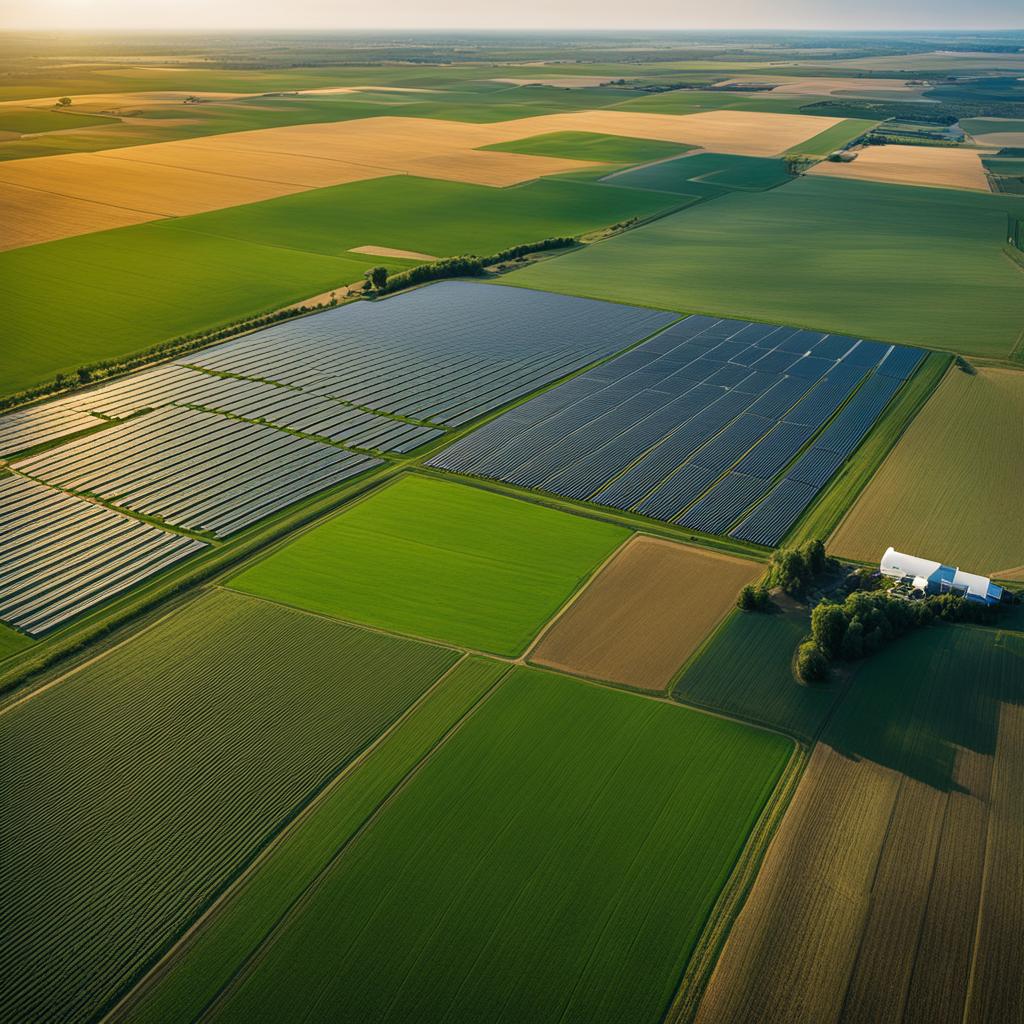
Why Farmland Investment is a Good Investment Option in 2024
Investing in farmland offers a unique opportunity to diversify your portfolio and potentially earn stable income and long-term appreciation. Farmland, as an essential asset for agriculture, has proven to be a lucrative investment option. Whether you’re a seasoned investor or new to the market, farmland investment provides a range of benefits that make it an attractive choice in 2024.
First and foremost, farmland investment can provide stable income through rental payments. By leasing your land to farmers, you can earn regular and predictable cash flow. This steady stream of income can help supplement your overall investment returns and provide financial stability.
In addition to income generation, farmland investment offers the potential for long-term appreciation. Over the years, farmland has shown a track record of consistent growth, often outperforming stocks and bonds. With the increasing global population and demand for food, the value of farmland is expected to rise, presenting an opportunity for investors to realize significant capital gains.
Farmland investment also provides diversification benefits. Unlike traditional investments like stocks and bonds, farmland has a low correlation with other asset classes. This means that the performance of farmland investments is less affected by market trends, providing a potential hedge against volatility. Diversifying your portfolio through farmland investment can help mitigate risk and enhance overall returns.
Furthermore, investing in farmland aligns with environmentally conscious practices. Sustainable farming methods and conservation techniques are becoming increasingly important in the agricultural industry. By investing in farmland, you can support these initiatives and contribute to a more sustainable future.
Key Takeaways:
- Farmland investment offers stable income through rental payments.
- Farmland has the potential for long-term appreciation, often outperforming stocks and bonds.
- Investing in farmland provides diversification benefits and can help mitigate risk.
- Farmland investment aligns with sustainable farming practices.
Reasons why farmland investment is becoming popular
Investing in farmland has gained significant popularity due to several key factors. In this section, I will discuss why farmland investment is becoming increasingly attractive to investors.
Potential for long-term appreciation and higher yields
Farmland investment offers the potential for long-term appreciation and higher yields compared to other investment options, such as stocks or traditional real estate. As the demand for food continues to rise with the growing global population, the value of farmland is expected to increase. This makes farmland investment a promising opportunity for investors seeking sustainable returns.
Increasing global population and demand for food
The increasing global population and the corresponding demand for food play a significant role in the popularity of farmland investment. As the world population continues to grow, the demand for agricultural products and farmland for cultivation will also increase. Investing in farmland allows investors to capitalize on this growing demand and benefit from a stable and essential asset.
Control over land use and multiple income streams
One of the key advantages of farmland investment is the control it provides over land use. By investing in farmland, investors have the ability to dictate how the land is utilized, which can include various agricultural activities or even alternative uses such as renewable energy production. This flexibility opens up opportunities for multiple income streams, allowing investors to earn both cash flow and long-term appreciation.
“Investing in farmland provides the potential for sustainable income and capital growth while supporting the essential need for food production.”
By diversifying their investment portfolio with farmland, investors can benefit from stable cash flows and long-term appreciation potential, all while contributing to sustainable farming practices and supporting global food security.
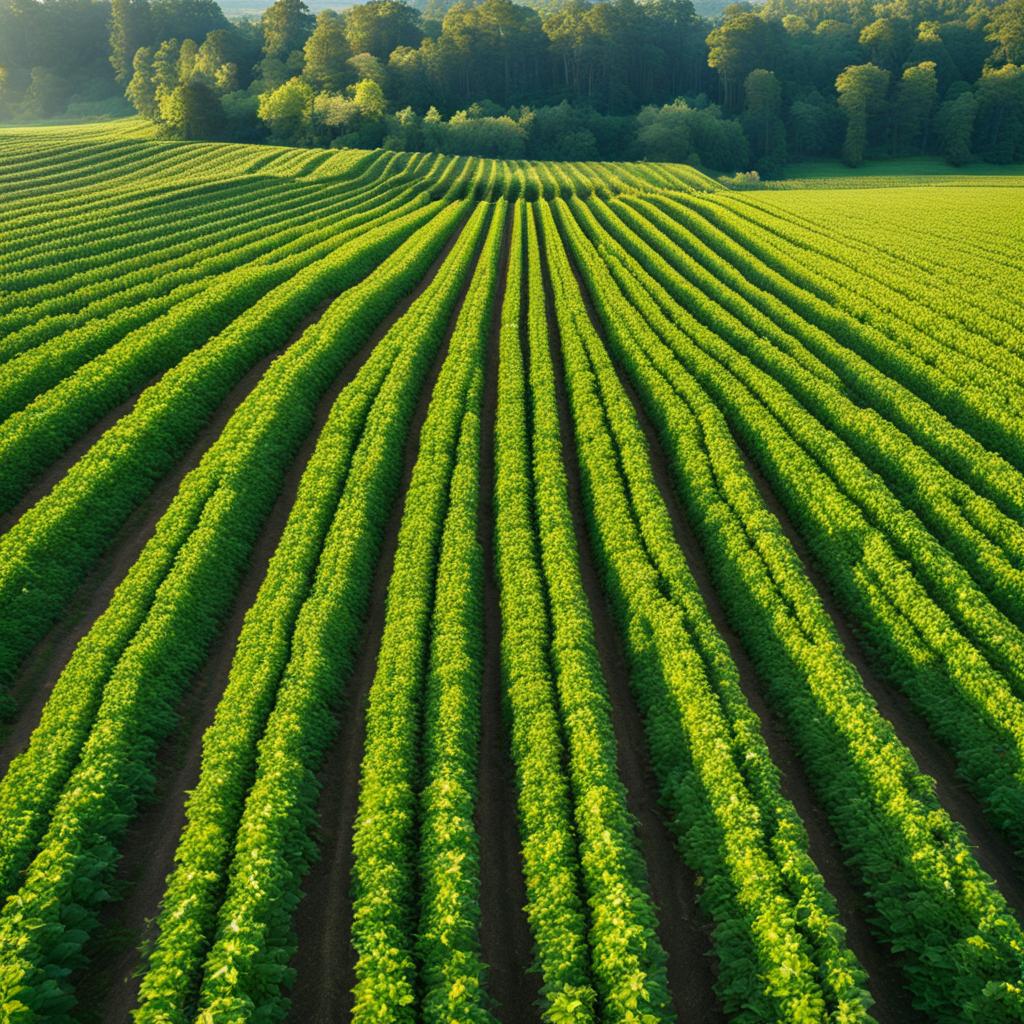
| Investment Option | Potential Returns | Volatility | Income Source |
|---|---|---|---|
| Farmland Investment | Potential for long-term appreciation and stable income | Low volatility, low correlation with stocks and bonds | Rent payments, potential for alternative income streams |
| Stocks | Varying returns, potential for high growth | High volatility | Dividends, capital gains |
| Real Estate | Appreciation potential | Moderate to high volatility | Rental income, capital gains |
| Cryptocurrency | High potential returns | Extreme volatility | Capital gains, speculation |
As the table above illustrates, farmland investment stands out for its potential returns and low volatility, making it an attractive option for investors looking to diversify their portfolios.
Comparison of Farmland Investment with Other Investment Options in 2024
When comparing investment options in 2024, farmland investment stands out for its unique benefits and potential returns. Let’s explore how farmland investment compares to other commonly considered options:
1. Correlation with Stocks and Bonds
Farmland investment offers a low correlation with stocks and bonds, making it an attractive addition to a diversified portfolio. While the stock market may experience volatility, farmland investments provide stability and act as a hedge against market downturns.
2. Lower Maintenance Costs and Longer Lease Terms
Unlike residential or commercial real estate, farmland has lower maintenance costs. This makes it an appealing option for investors, as they can avoid the expenses associated with building maintenance or property management. Additionally, farmland leases typically have longer terms, providing investors with a stable income stream over an extended period.
3. Steady Source of Income with Potential Long-Term Appreciation
Compared to cryptocurrency or precious metals, farmland investments offer a steady source of income. Farmland generates revenue through rental payments from farmers who cultivate the land. Additionally, farmland has the potential for long-term appreciation, as the growing global population requires increased food production.
“Farmland provides investors with a tangible asset that can generate income and appreciate in value over time. It offers a unique combination of stability, income, and growth potential.”
As seen in the table, farmland investment offers distinct advantages in terms of correlation, maintenance costs, income stability, and long-term appreciation potential compared to other investment options. Its ability to provide consistent returns and act as a natural resource asset adds to its appeal among investors.
Benefits of Farmland Investment
Investing in farmland offers a multitude of benefits that make it an attractive option for investors seeking stable income and long-term appreciation. Let’s explore some of the key advantages:
1. Steady Source of Income
Farmland investment provides a reliable and consistent source of income through rent payments. Farmers lease the land from the investor and pay rent based on the terms of the agreement. This regular income stream can provide stability in an investment portfolio.
2. Potential for Long-Term Appreciation
Farmland has historically shown the potential for long-term appreciation in value. As population growth and demand for food continue to rise, the value of fertile farmland often increases. Investing in farmland offers the opportunity to benefit from this appreciation over time.
3. Portfolio Diversification
Farmland investment allows for portfolio diversification, reducing risk by adding an asset class that typically has low correlation with stocks and bonds. This diversification can help protect against market volatility and improve overall portfolio performance.
4. Tangible Asset with Low Volatility
Unlike stocks or other financial instruments, farmland is a tangible asset with inherent value. The physical nature of farmland helps to insulate it from market fluctuations and provides a stable investment that tends to have lower volatility.
5. Tax Benefits
Investing in farmland can offer tax benefits. Depending on the specific jurisdiction, investors may be eligible for tax deductions on expenses related to farmland ownership, such as property taxes and maintenance costs. These tax advantages can enhance the overall return on investment.
6. Support for Sustainable Farming Practices
By investing in farmland, investors have the opportunity to support sustainable farming practices. Many farmland investments focus on environmentally friendly and socially responsible farming methods, promoting conservation and responsible land stewardship.
Overall, investing in farmland provides a unique combination of income, potential appreciation, diversification, tax advantages, and alignment with sustainable farming practices. These benefits make farmland investment an appealing option for investors looking to build a resilient and profitable portfolio.
Things to Consider Before Investing in Farmland
Before diving into farmland investment opportunities, it’s crucial to consider several factors that can impact your investment decisions. Understanding the type of farmland, its location, pricing dynamics, and potential returns, as well as associated risks, is essential for making informed choices. Let’s take a closer look at each of these factors to help you navigate the world of farmland investment.
Type of Farmland
The type of farmland you choose to invest in can significantly influence your investment outcomes. Different types of farmland, such as crop farms, livestock farms, or specialty farms, have unique characteristics and considerations. Factors like soil quality, climate suitability, and regional demand for specific agricultural products play a crucial role in determining the profitability and long-term appreciation potential of farmland investments.
Location
Location is a key driver of farmland demand and value. Farmlands located in regions with favorable climate conditions, access to irrigation, transportation infrastructure, and proximity to markets tend to attract higher demand and generate better returns. Understanding the local agricultural ecosystem, including government policies, water rights, and environmental regulations, is essential when evaluating different farmland investment opportunities.
Pricing Dynamics
The price of farmland can vary significantly based on various factors. Market conditions, local supply and demand dynamics, proximity to urban areas, and land-use restrictions can all impact farmland prices. It’s essential to conduct thorough market research and analysis to ensure that the pricing is reasonable and aligned with the potential returns you are seeking.
Potential Returns
Potential returns from farmland investments encompass two main components: income generation and long-term appreciation. Rental income from leasing the farmland to farmers can provide a steady cash flow. Additionally, farmland has historically shown stable appreciation and can serve as a store of value. Understanding the historical performance and growth opportunities in the agricultural sector can help assess the potential returns of a farmland investment.
Associated Risks
Investing in farmland, like any investment, comes with its own set of risks. Market demand for specific agricultural products can be subject to volatility, which can impact rent prices and profitability. Additionally, maintenance costs, such as irrigation systems, equipment, and regulatory compliance, should be considered. Furthermore, managing a farmland investment might present challenges requiring expertise in agricultural operations and risk management.
In conclusion, farmland investment offers unique opportunities for diversification and potential returns. By carefully considering factors like the type of farmland, location, pricing dynamics, potential returns, and associated risks, investors can make well-informed decisions and maximize their chances of success in the farmland market.

How to Invest in Farmland in 2024: A Step-by-Step Guide
Are you interested in investing in farmland? In this step-by-step guide, I will walk you through the process of investing in farmland in 2024. Whether you’re a seasoned investor or just starting out, this guide will provide you with the information you need to make informed decisions and maximize your returns.
Investing in farmland can be a lucrative opportunity, offering stable income and potential long-term appreciation. With the increasing global population and demand for food, farmland investment presents unique benefits and opportunities. By investing in farmland, you not only have the potential to earn attractive returns but also contribute to sustainable farming practices.
So, how do you get started with farmland investing? Follow this step-by-step guide to make the process smooth and successful.
Key Takeaways:
- Research and choose the right farmland based on factors like location and potential growth.
- Determine your investment strategy, such as direct ownership or investing in a farmland REIT.
- Secure financing to cover the purchase and expenses.
- Consider joining crowdfunding platforms or private funds.
- Monitor and manage your investment to ensure its success.
Conclusion
Investing in farmland can be a lucrative opportunity in 2024, offering stable income and the potential for long-term appreciation. Farmland REITs present a convenient way to invest in farmland without requiring significant capital investments. However, it is crucial to carefully evaluate the specific farmland, investment strategy, financing options, and associated risks before committing to an investment.
By following a step-by-step guide, investors can make informed decisions and maximize their returns. Researching and selecting the right farmland based on factors such as location and growth potential is essential. Additionally, determining the investment strategy that aligns with individual goals, whether through direct ownership or investing in a farmland REIT, is key.
Securing appropriate financing options is another crucial consideration, as it ensures the necessary capital to cover the purchase and ongoing expenses. Finally, regular monitoring and management of the investment are necessary to ensure its success. These steps, coupled with careful diligence, can help investors make the most of the farmland investment opportunities available in 2024.
FAQ
What is a Farmland REIT?
A farmland REIT is a company that holds farmland and leases it to farmers. Investors finance the REIT and earn dividend payments based on the rent paid by the farmers.
How Does a Farmland REIT Work?
With a farmland REIT, investors can invest in increments and diversify their investment across multiple farmland properties. The REIT handles property management and leasing, allowing investors to earn passive income. Farmland REITs are publicly traded and offer liquidity, making it easy to buy and sell shares.
What are the Pros and Cons of Farmland REIT Investments?
Investing in farmland REITs can provide stable income, long-term appreciation, and diversification benefits. It offers a way to invest in an essential asset for agriculture and potentially earn higher returns compared to other investments. However, investors should consider the potential risks, including management decisions by the REIT and tax implications.
What are the Top Farmland REIT Investments?
Farmland Partners and Gladstone Land are two notable farmland REITs in the market. Farmland Partners owns over 150,000 square feet of land in 16 states and has over 100 tenants. Gladstone Land focuses on fruit and vegetable farmland in high-demand areas and owns over 115 farms in 10 states. Both REITs offer monthly dividend payments and have a track record of stable returns.
What are the Alternatives to Own Farmland?
Besides investing in farmland REITs, there are other ways to own farmland. Direct ownership requires a significant investment and management responsibilities. Sale-leaseback arrangements involve buying property from a farmer and leasing it back to them. Accredited investors can also consider farmland crowdfunding, where they can invest in the debt or equity of farmland projects. Each alternative has its own benefits and considerations.
Why is Farmland Investment a Good Investment Option in 2024?
Investing in farmland offers potential returns, long-term appreciation, and diversification benefits. It is an essential asset for agriculture and can provide stable income through rent payments. Farmland investment has historically outperformed stocks and bonds and offers a tangible asset that can be managed. Additionally, investing in farmland has environmental benefits and can contribute to sustainable farming practices.
Why is Farmland Investment Becoming Popular?
Several factors contribute to the popularity of farmland investment. Farmland offers potential long-term appreciation and higher yields compared to stocks or other real estate investments. The increasing global population and demand for food further support the value of farmland. Additionally, farmland investment provides control over land use and the ability to earn both cash flow and long-term appreciation.
How Does Farmland Investment Compare to Other Investment Options in 2024?
Farmland investment offers unique benefits compared to other investment options. It has a low correlation with stocks and bonds, making it a valuable addition to a diversified portfolio. Unlike residential or commercial real estate, farmland has lower maintenance costs and longer lease terms. Compared to cryptocurrency or precious metals, farmland provides a steady source of income with potential long-term appreciation.
What are the Benefits of Farmland Investment?
Investing in farmland provides several benefits. It offers a steady source of income through rent payments and the potential for long-term appreciation. Farmland investment allows for portfolio diversification and offers a tangible asset with low volatility. It also provides tax benefits and the opportunity to support sustainable farming practices.
What Should I Consider Before Investing in Farmland?
Before investing in farmland, consider factors such as the type of farmland, location, price, potential returns, and associated risks. Different types of farmland have unique characteristics and considerations. Location plays a crucial role in the demand and value of farmland. The price of farmland can vary depending on various factors. Potential returns come from income generation and long-term appreciation. However, there are risks, such as changes in market demand, maintenance costs, and management challenges.
How Can I Invest in Farmland in 2024?
Investing in farmland requires a step-by-step approach. Start by researching and choosing the right farmland based on factors like location and potential growth. Determine your investment strategy, such as direct ownership or investing in a farmland REIT. Secure financing to cover the purchase and expenses. Consider joining crowdfunding platforms or private funds. Lastly, monitor and manage your investment to ensure its success.
Is Farmland Investment a Lucrative Opportunity in 2024?
Investing in farmland can be a lucrative opportunity in 2024, offering stable income and potential long-term appreciation. Farmland REITs provide a way to invest in farmland without the need for large capital investments. Before investing, carefully consider the specific farmland, investment strategy, financing options, and associated risks. By following a step-by-step guide, investors can make informed decisions and maximize their returns.
Our Friends
- https://communitylands.com/communitychronicle/step-by-step-guide-to-invest-in-farmland-in-2024
- https://millennialmoneyman.com/farmland-reit/
- https://adwordsnerds.com/guides/ppc-for-real-estate-investors/
Money posts:
 Are REITs a Good Investment? (2024)
Are REITs a Good Investment? (2024)
 17 Best Alternative Investments To Consider in 2024
17 Best Alternative Investments To Consider in 2024
 13 Best Alternative Investments to Boost Your Portfolio in 2024
13 Best Alternative Investments to Boost Your Portfolio in 2024
 13 Best Compound Interest Accounts & Investments (2024)
13 Best Compound Interest Accounts & Investments (2024)
 9 Best Investments for a Roth IRA (2024)
9 Best Investments for a Roth IRA (2024)
 12 Best Ways to Invest $5000 Dollars (2024)
12 Best Ways to Invest $5000 Dollars (2024)
 14 Best Real Estate Crowdfunding Platforms (2024)
14 Best Real Estate Crowdfunding Platforms (2024)
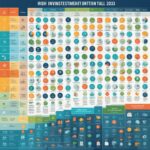 13 Best High-Yield Investments for 2024
13 Best High-Yield Investments for 2024
